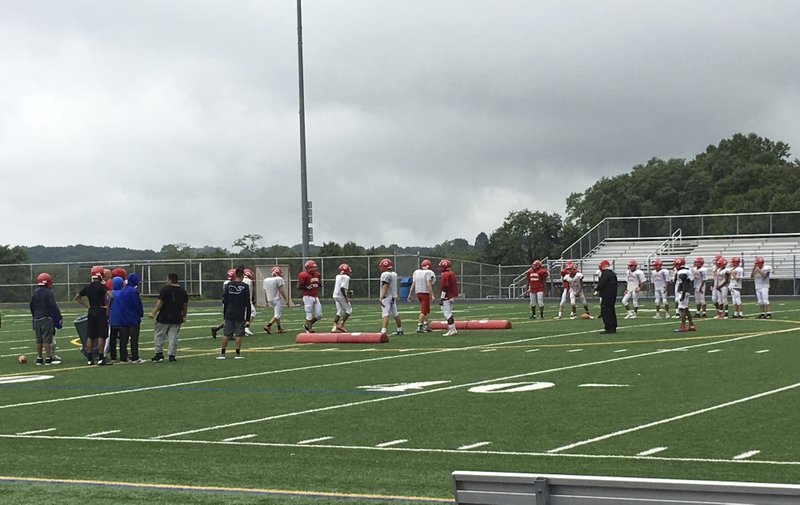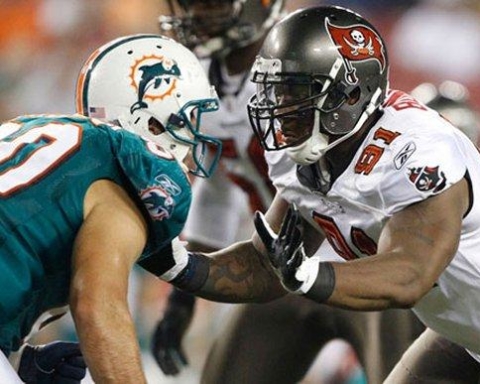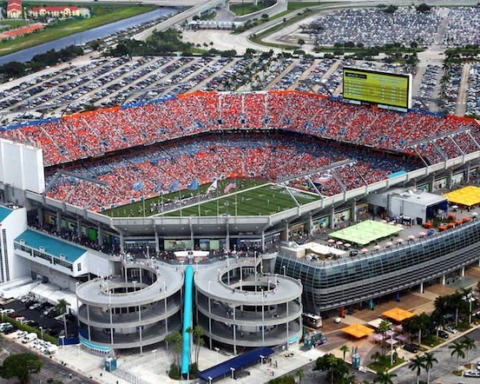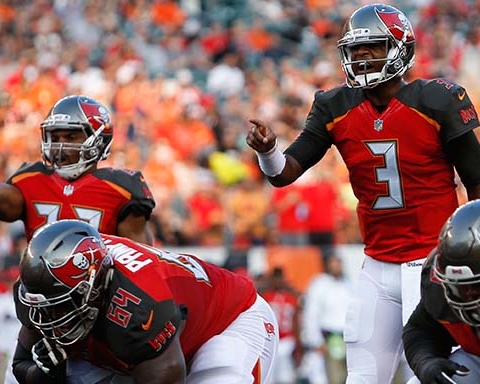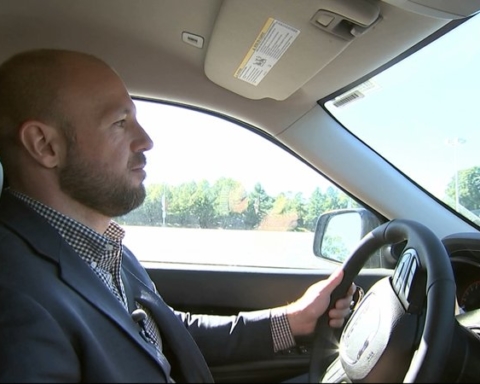 On a cool and rainy afternoon during the first week of classes at Centennial High School in this well-to-do Baltimore suburb, about 50 members of the boys’ cross-country team sauntered across the parking lot for their after-school run.
On a cool and rainy afternoon during the first week of classes at Centennial High School in this well-to-do Baltimore suburb, about 50 members of the boys’ cross-country team sauntered across the parking lot for their after-school run.
Meanwhile, about 30 kids in helmets and pads were going through drills on the pristine artificial turf field at the school’s hillside football stadium.
“It used to be the other way around,” said Al Dodds, Centennial’s cross-country coach, who has 64 boys on his team this year. “Now, there’s a small turnout in football and cross-country is huge.”
Across the athletic complex, a practice football field sat empty, even though it was recently mown and painted with yardage lines and hash marks. In years past, the junior-varsity team would have been relegated to that grass field. But on this day, they had the stadium to themselves, as they will for every practice this fall. Centennial isn’t fielding a varsity football team because not enough kids signed up to play.
The situation at Centennial — where a long history of losing has dampened students’ enthusiasm for football — is unique to this part of central Maryland, but there are plenty of similar examples around the U.S. Participation in high school football is down 3.5 percent over the past five years, according to the annual survey by the National Association of State High School Federations, or NFHS.
The decline would be much steeper if not for a handful of states in the South and the West. Throughout the Northeast, the Midwest and the West Coast, in communities urban and rural, wealthy and working-class, fewer kids are playing football.
“I’ve never been interested in football,” said 16-year-old Zach Deming, a cross-country runner at Centennial with the solid build of a defensive back. “I’m afraid of getting hurt badly, like getting a serious concussion .”
The risks of football have never been more apparent. This summer, researchers at Boston University said they’d found evidence of a brain disease linked to repeated head blows in nearly all of the 202 former football players they studied. The athletes whose brains were donated to the study had played football in the National Football League, college and even high school.
The report doesn’t confirm chronic traumatic encephalopathy, known as CTE, is common in all football players, because many donors or their families participated in the study because of the players’ troubling symptoms.
After years of denials, the NFL acknowledged a link between head blows and brain disease and agreed in 2015 to a $1 billion settlement to compensate former players who had accused the league of hiding the risks.
“There’s no question about it. The amount of publicity, beginning with the NFL and what you see on national news, has caused concern among parents,” said Bob Gardner, the NFHS executive director. “Probably some who would have been more inclined to let their young men play, maybe are making different decisions now.”
A study published last month in the medical journal Translational Psychiatry showed that kids who played football before age 12 were more than twice as likely to have mood and behavior problems.
The news hasn’t escaped the parents at Centennial, one of the top-rated public high schools in Maryland, where 97 percent of students go on to college after they graduate. Just 10 percent of students qualify for free or reduced-price meals, an indicator of poverty.
“Families around here are more into academics,” Zach said.
Maryland is one of 14 states where participation in football was down 10 percent or more over the past five years, according to NFHS data. In all, 41 states saw a decline between the 2011-12 and 2016-17 school years, and just nine states and the District of Columbia saw increases.
In West Windsor Township, New Jersey, which borders Princeton University and has a median household income of $137,000, one of the two public high schools dropped varsity football this year, and the other might have to do the same next year.
Trinity High School in Manchester, New Hampshire, also disbanded its varsity team, with hopes that it could return in a lower division next year.
At the first practice, the team “had three seniors, one junior, 12 sophomores and one freshman,” athletic director Chip Polak told the New Hampshire Union Leader in August. “Two of the seniors have never played any kind of organized football, and the other senior is dealing with concussion symptoms.”
In Ventura County, California, northeast of Los Angeles, Thousand Oaks High School disbanded its junior-varsity team this season because it needed sophomores and juniors to fill out the varsity roster. In Marin County, north of San Francisco, Novato High School announced that it wouldn’t field a varsity team this year, but the program got a last-minute reprieve when more athletes than expected showed up for practice.
The decline in participation isn’t just limited to wealthy, coastal communities. Among the states where participation is down more than 10 percent are Iowa, Kansas, Michigan, Wisconsin and Illinois. Population in Illinois has also declined over that period, while in Michigan and Wisconsin it has only grown slightly.
Researchers at the University of Colorado, who studied data from the NFHS and the Census, said in an analysis published Sept. 26 that high school football participation peaked in 2009 before beginning a decline that is likely to continue.
The NFL is paying attention to the numbers and trying to find ways to get kids playing the sport.
“It is important for kids to play sports because it’s healthy, it’s fun, and they learn important values,” NFL spokesman Brian McCarthy said. “Of course, we think football is the best team sport, and we aim to ensure there are a range of options for young players today — both tackle and flag.”
While participation in tackle football is down, flag football is becoming more popular. Participation in the NFL Flag program run by USA Football for kids ages 6-17 increased by 66 percent from 2013 to 2016, with 385,000 kids playing last year.
In high schools, the expense of the sport and increasing specialization by young athletes are also factors. And while football is declining, other sports are growing, among them soccer and lacrosse. But football is different because it remains the nation’s most popular spectator sport, and schools expect to sell tickets on Friday nights.
“The key thing about football is that it’s such an important part of the financial picture of schools. Some of these schools rely on the attendance in high school football to pay for these other sports,” Gardner said. “While we certainly applaud the growth of all sports, we remain vigilant about what’s going on in football because of the economic impact.”
Around the Centennial football program, there is optimism that varsity football could return next year if the JV team can put together a reasonably competitive season. The team has a strong freshman class, some of whom have never played organized football before.
Toward the end of the 2-hour practice, coaches wanted the first-team defense to get some full-speed reps. That required some creativity.
“If you’re not on first-team defense, I need 11 of you to make an offense,” an assistant coach barked. “I need a running back, I need a fullback, I need five linemen, I need a tight end, I need two wide receivers. Let’s go!”
Republished with permission of The Associated Press.

